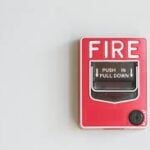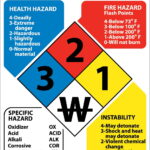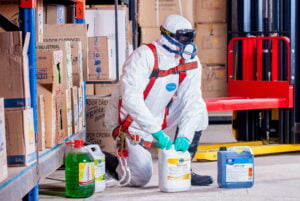Commodity classifications are necessary for organizations that handle any sort of chemical, as it ranks noncombustible to combustible products from high to low. In addition, it gives specific instructions on how and where these materials should be stored. The classification standards are protective in nature as they allow business owners to take precautions against a possible fire or explosion.
What Are Commodity Classifications?
Commodity classifications are determined by the materials being stored. Many chemicals contain plastic materials that could result in combustion if inadvertently mixed with the wrong thing. These can come in the form of metal, wood, plastic, or even hazardous chemicals. Their storage details are determined by the packaging type, environment, container, and air circulation within an environment. These classes are broken into four distinct class commodities.
Class I Commodities:
Noncombustible products that do not need a sprinkler system are classified as Class I commodities. They are low-maintenance products that are typically stored in wooden, paper, or deck pallets.
Class II Commodities:
These items are noncombustible in nature but stored in containers that could prove to be combustible such as wooden crates or boxes, cartons, or crates. Powdered products that are stored freely within any inward security are also considered combustible.
Class III Commodities:
These items are primarily made from wood, natural fibers, or paper. Under state regulations, they shouldn’t contain more than 5 percent of combustible or low-heat plastics. This is determined by the grouping of the plastic as well as the dimensions of the item. These are relatively combustible and should undergo careful storage.
Class IV Commodities:
These include combustible plastics that have high heat combustions and are able to burn in fire. These are hazardous commodities that need to be stored in specific containers. Since these are highly flammable, they must undergo a unique storage system to ensure that a fire or explosion doesn’t occur. A consultant is able to help you identify these commodities.
Plastics Broken Down
Many warehouses specifically utilize plastic materials to meet their business needs. Although extremely reliable, certain plastics can cause a fire or explosion when stored incorrectly. Each plastic incompasses a group classification ranging from A to C. They each display the different hazardous levels that could potentially become combustible.
Plastics can either come in expanded or unexpanded forms. An unexpanded plastic contains materials with high density. These are commonly found in children’s toys, food containers, and musical instruments. Expanded plastics, however, undergo a foaming process that makes them more easily susceptible to fires. This is why certain plates and cups shouldn’t be heated in the microwave. Businesses that work with expanded plastics will need special precautions taken.
Storage for High Hazard Commodity
When it comes to items that have high hazardous levels, it’s important to consider where these items are stored so as to avoid an accident. Consider consulting with a commodity professional in order to ensure that your facility is storing items up to code. They may analyze your building, storage capabilities, and offer reliable solutions that cater to your unique needs.
Implement Fire Protection
When housing potentially hazardous materials, it’s important to invest in reliable sprinklers that will assist with putting out a fire. Early Suppression, Fast Response sprinkler systems are notably the best on the market for implementing a quick and efficient solution to a possible fire. They are able to abide by state commodity classification regulation codes. They are specifically designed to defend the in-house commodities and protect against a potential threat. However, because some material fires don’t respond well to water, a consultant can help you determine which sprinklers will work best for your needs.
Setting up a commodity classification consultation is essential to ensuring that your business is up to classification code and abides by the commodity classifications list. It is imperative to consult with a licensed professional who can analyze your business area and guarantee that everything is safe and efficient.











